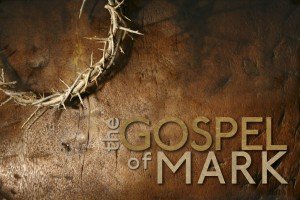 As I have suggested in considering Mark’s Gospel, we must understand the Old Testament (OT) background that informed Mark’s thinking and the thinking of the Early Church. God’s Wisdom, as we can discern from the reading of Genesis, was there from the beginning and created the world and all that is in it. God’s Wisdom is imagined as a maternal figure, that is life-giving, nurturing and healing, restorative and transfiguring. When Mark wanted to communicate the significance of Jesus, it was quite natural for him to present Jesus as God’s Wisdom made flesh.
As I have suggested in considering Mark’s Gospel, we must understand the Old Testament (OT) background that informed Mark’s thinking and the thinking of the Early Church. God’s Wisdom, as we can discern from the reading of Genesis, was there from the beginning and created the world and all that is in it. God’s Wisdom is imagined as a maternal figure, that is life-giving, nurturing and healing, restorative and transfiguring. When Mark wanted to communicate the significance of Jesus, it was quite natural for him to present Jesus as God’s Wisdom made flesh.
A grasp of Mark’s overriding reference to Scripture (OT) should keep the reader from regarding his Gospel as an eyewitness account or as any conventional form of biography or history. It must also be remembered that at the time Mark was writing his gospel, there was still the belief by many of the Apostles that Jesus came to renew/reform Judaism. We hear in the gospels that Jesus told His apostles to go and preach to the people of Israel.
What Mark gives us is far richer. In keeping with the Jewish practices of his time, Mark interprets Jesus in the light of the Hebrew Bible. He uses Scripture as an interpretive framework. At the same time, he shows Jesus reinterpreting the OT. Out of this two-way exchange, Mark offers us a Wisdom book.
Like other Wisdom books, Mark’s Gospel derives its meaning from the Hebrew Bible. It takes place, for the most part, in the everyday settings of sea and synagogue, home and table. Its central figure, Jesus, offers wisdom in parables, riddles and short pithy sayings called aphorisms. At the same time, Mark shows Jesus to be not only a teacher of Wisdom but Wisdom itself. Jesus calls his followers to what can be called an unconventional wisdom, a way of living (and a way of dying) that he himself exemplifies.
In more modern terms, Mark’s work is truly and really theological. As such, its is purposefully put together. An attentive reader cannot fail to notice Mark’s craft: the repetition of certain significant words and the shaping of the narrative into symbolic events and meaningful patterns. There is a theological focus to his overall design. It must be remembered that the intent of all of the evangelists was to bring people to believe in Jesus Christ as the Messiah, Redeemer and Lord. Jesus is God’s Promise to mankind made real. God’s revelation about how to live as human beings.
